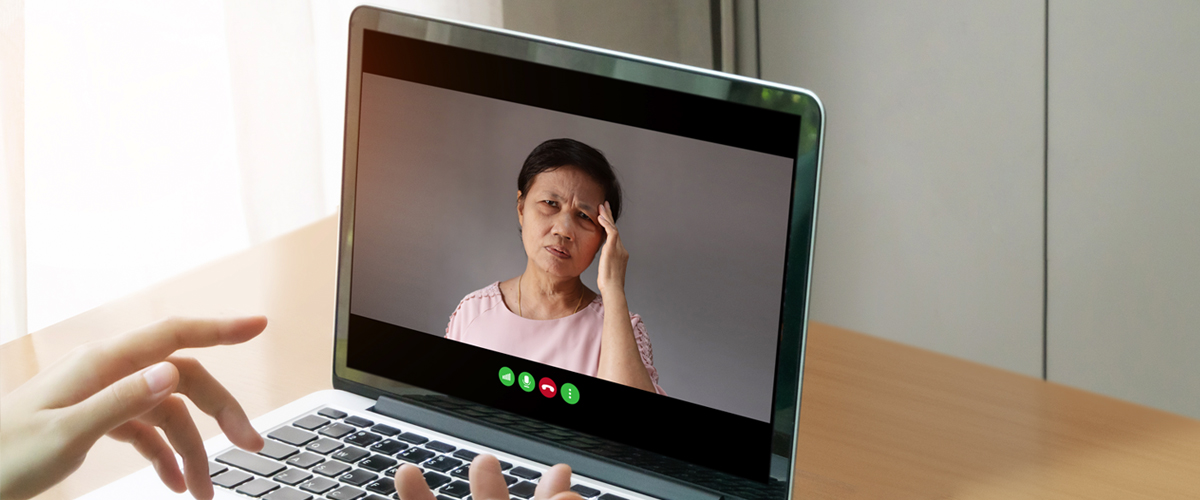How to Have a Better Virtual Healthcare Visit
A telemedicine expert offers tips for a successful online visit with a doctor.

Telemedicine — the ability to hold a virtual healthcare visit with a doctor through your computer, tablet, or smartphone — has become an essential tool as people across the country are encouraged to stay home. It not only helps people stay connected to their medical providers, but it also helps to mitigate the spread of COVID-19.
“During a public health crisis, telemedicine is optimal,” says Dr. Rahul Sharma, emergency physician-in-chief at NewYork-Presbyterian/Weill Cornell Medical Center and chair of the Department of Emergency Medicine at Weill Cornell Medicine. “You’re minimizing disease spread, eliminating unnecessary hospital visits, and freeing up resources to best serve those who are in critical need.”
Through NewYork-Presbyterian’s telemedicine platforms, patients can simultaneously support social distancing and safely seek care for themselves and their families. Over the past two months, usage of these services has skyrocketed, says Dr. Sharma. In some specialties, such as neurology, psychiatry and dermatology, the percentage of patients being seen through video visits more than doubled from March to April, and patients can virtually meet with providers in more than 80 specialties, ranging from primary care to ophthalmology to obstetrics.
Here, Dr. Sharma offers tips for a successful virtual healthcare visit.
- Make sure your technology is working. Check that you have a strong connection to the internet and that the camera and volume on your device are on and working. A lot of the technological problems occur when people don’t have a good connection.
- Have a backup in case your device dies. First, download a telemedicine app on your phone or tablet and give it permission to use the camera and the microphone on your device, or log in to a telemedicine service on your home computer. You might choose NYP’s OnDemand app or you can log in through your web browser. Both will allow you to run a test first to make sure everything is in good working order. If you’re using your home computer, make sure you also have a smartphone with the app, and vice versa, just in case something goes wrong.
- Prepare as you would for an in-person visit. Be just as prepared as if you were going to see a doctor in their office. Have your questions ready and a list of the medications you’re taking. Be prepared to answer questions about your symptoms. Telemedicine is simply medicine being delivered via a different platform.
- Use a private space. You will be talking about your health, so you should be in an area where you feel comfortable and that’s private enough if you don’t want anyone to hear your information. Your provider may take a thorough medical history and ask you sensitive questions about your health. And whether you are using a phone, tablet, or laptop, set it up so you are visible on the screen. Your doctor may need to see your whole body, not just your face.
- Prepare to help the doctor check your vitals. If you have a thermometer or wearable technology that measures your heart rate, like a smartwatch, have it available and let the provider know. If you don’t have a smartwatch, the doctor can help you take your pulse. Heart rate and temperature are important vital signs and allow the clinician to put pieces of the puzzle together.
- Expect a possible physical exam. Your provider might ask you to open your mouth and shine a light on the back of your throat. They might ask you to feel your abdomen and push on it to let them know if that hurts, they might ask you to show a rash, or they can observe your breathing pattern to see if you are in respiratory distress.
- Set up in a well-lit room. If the doctor needs to do a physical exam, lighting is very important. A flashlight can also be helpful if the doctor needs a better view.
- Accept some limitations. Many conditions can be treated through telemedicine, but it’s not for every situation. Obviously, physical procedures, like stitches, can’t be done virtually.
“Doctors are able to provide high-quality healthcare through telemedicine platforms,” says Dr. Sharma, adding that you don’t have to take off the entire day or block off hours of your schedule to go see your doctor. “I think this is going to be the way we increasingly meet with patients as they get to be more comfortable with it, and telemedicine is going to be a routine part of healthcare.”
Rahul Sharma, M.D., is emergency physician-in-chief at NewYork-Presbyterian/Weill Cornell Medical Center and chair of the Department of Emergency Medicine at Weill Cornell Medicine. He is a national leader in the fields of emergency medicine, healthcare operations, telemedicine and virtual healthcare, and in 2019 was named a Top 25 Innovator in the healthcare industry by Modern Healthcare magazine.
Additional Resources
If you are not feeling well, consider using NewYork-Presbyterian’s Virtual Care for non-life-threatening symptoms such as fever, cough, upset stomach, or nausea. Learn more by calling 646-697-2273 or visiting nyp.org/virtualcare.
